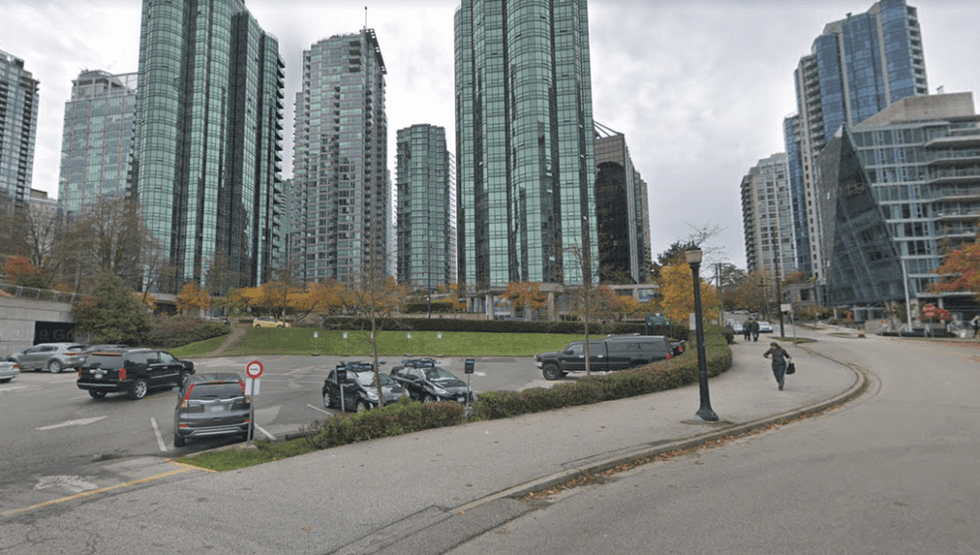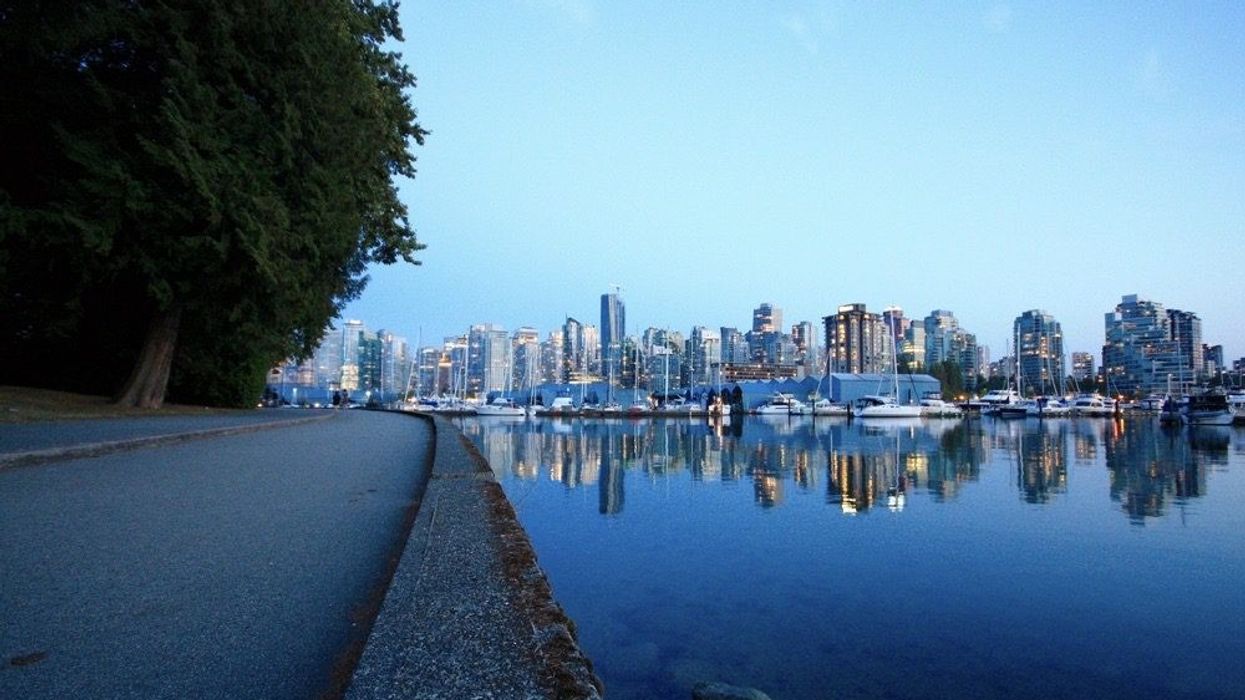Downtown Vancouver’s Coal Harbour is one of Canada’s most expensive neighbourhoods. The 9,000 or so residents who live in the dense neighbourhood, which has many condo and rental high-rises, enjoy a waterfront seawall and parks, with some of the city’s best mountain and ocean views.
A battle has been underway this month between Coal Harbour residents and the City, which has proposed to develop a parking lot on the seawall into an 11-storey building with 60 units of social housing, a 340-student elementary school, and daycare with capacity for 65 children. Many area residents oppose the project on the grounds that the small, irregularly shaped site doesn’t have much room for traffic flow, and there’s little street parking. They have concerns that the adjacent park will be left in the shadows and drop-off traffic at the school will create congestion and safety issues and impair the current high livability of the neighbourhood. Supporters are baffled as to why anyone would oppose a school and affordable housing.
But Coal Harbour Residents Association president Rahim Jivraj says that the majority of the CHRA members aren’t opposed to social housing and a new school.
What they oppose is the manner in which the City conducted its engagement with the public. Jivraj says the process is flawed, and they feel the plan was rushed, “rammed through” without giving proper consideration to the residents’ concerns, which is why there is overwhelming opposition.
READ: Vancouver Realtors Want to Shine More Light on Blind Bidding Process
“Our group supports social housing and we support the school,” said Jivraj, who has lived in Coal Harbour since 2007, and has children. “What we don’t support is being put through a process where information is either deliberately withheld or inaccurate. We just don’t have the information to make an informed decision. We haven’t been collaborated with. A proper public consultation hasn’t occurred.”
Some of their questions involve access to data, such as the numbers that support the need for a 350-student school, or 60 units of social housing, or the precise plan for extra traffic.
“What’s interesting here, too, is the City is the applicant. They hired the architect. They are the judge, which is the Development Permit Board, and now the jury, which is the council. There is an inherent issue in that. They’re not objective.
“So there are real concerns. We would be happy with a plan that addressed traffic and safety concerns while maintaining our livability.
“We already have social housing in our community. We support it. But we want it done right.”
The city-owned site at 480 Broughton Street already features a community centre, small park and play area, all of which will remain. The parking lot adjacent to the community centre is the site under review.
The concept is nothing new. Back in the 1990s, an official development plan for Coal Harbour tagged the site for a future school and social housing. Phase 1 of the plan included the community centre, underground parking and park, completed in 2000. Two nearby social housing projects were completed more than 20 years ago.

Originally, the number of housing units for phase 2 was set at 40, which has meant an additional 14,000 square feet to the building, and an extra storey. The development permit board approved the changes in March, and a public hearing for the rezoning was held this week, with a decision to be made by council June 30.
A couple of weeks ago, opposition was overwhelming, with 197 opposed and two in favour. As of June 30, those opposed to it numbered 219 (including petitions), compared to 127 supporters. The need for a new school and social housing far outweigh the opposition’s concerns, say supporters.
Former chief planner for Vancouver, Larry Beasley, led the planning on Coal Harbour in the 90s, and he supports the project they envisioned. But he also says that the lack of proper community engagement is a problem for Vancouver residents. Beasley now works around the world, and is famous for his role in revitalizing Vancouver’s downtown core. His planning work was key in what became known and celebrated as Vancouverism.
“This is a very good thing for the city, not just for the people in that neighbourhood, but for a lot of families, particularly modest income, single parent families that are living in the West End,” Beasley said. “It’s something that is really needed in the city, the neighbourhood and the community.”
“I personally believe social housing needs to be built every time we get a chance… So the concept of that in the neighbourhood to me is a good thing, an appropriate thing, and something that was always there from the very beginning.”
However, he says the onus is on the policy makers to educate residents, provide them with the information, and collaborate with citizens before a project gets approved instead of pushing it through. They shouldn’t assume that all residents are unreasonably resistant to change, because many have valid concerns. Some of those concerns about loss of views, for example, meant they’d adjust designs of buildings in a way that worked.
“A lot of people used to hate density. A lot of people hate tall buildings. They don’t want them as neighbours. There’s always been this push back,” says Beasley.
“As a neighbourhood planner, I would say [to the residents] ‘I want to talk to you about what you are worried about.’ Can we do our project in a way that’s less impactful on you? That’s why, for example, we started stepping the design of buildings down, so they weren’t so oppressive on the houses next door.
“To me, the policymakers need to lead the process of reconciliation of interests. They understand the public agenda, they should understand the different private agendas -- and they should be the ones who help to reconcile those. They also have the power base to do that.”





















